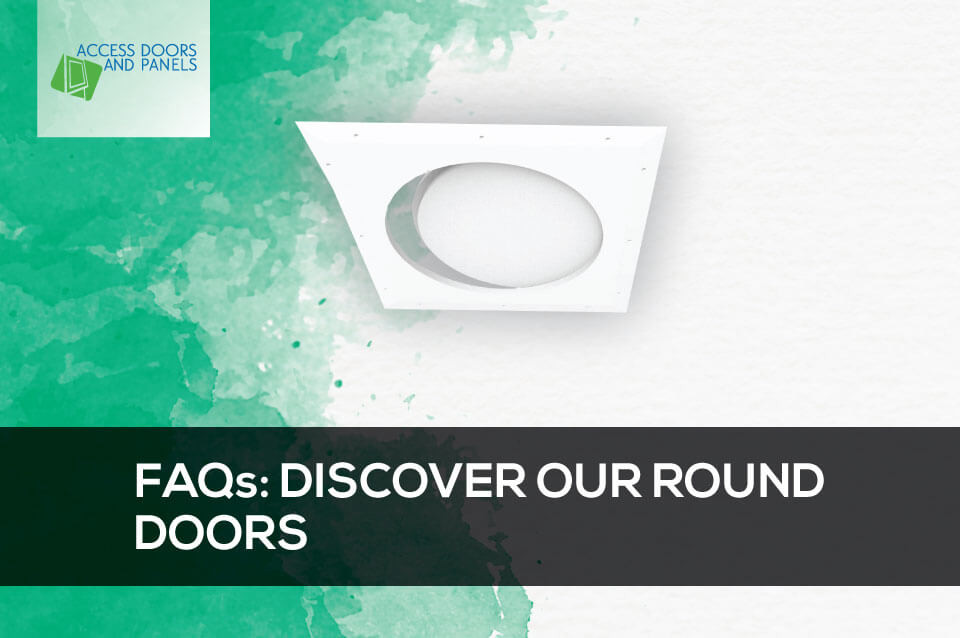Discover Our Round Doors
Posted by Access Doors and Panels on 29th Jul 2021
There are many types of access doors and panels you can find in the market today. These products have their functions for different settings in various areas and pros and cons for their varied use. One of the most fun products you can find right now is the round version of the general-purpose access door made from Glass Fiber Reinforced Cement.
What Makes It Unique?
These access panels are perfect for interior applications that need discreet, hidden access. The panels come with a tapered edge profile that blends smoothly with circular light fixtures, speakers, and smoke alarms to retain the aesthetic motif in their design. These designs are for tape-in installation and provide a stealth appearance in drywall ceilings.
These panels won't rust and are moisture tolerant so that they won't develop mold or fungi and feature lightweight, glass fiber reinforced gypsum with high compressive strength and won't warp, sag, or break. Due to its primary material, which is Glass Fiber Reinforced Cement, it offers many uses.
Here is a short product feature of a 12" x 12" Glass Fiber Reinforced Cement Round - Acudor:
- Tapered edge for joint tape
- Easily textured
- Lightweight
- No cracking or shrinkage
- Mold and moisture resistant
What Is Glass Fiber Reinforced Cement?
Fiber-reinforced concrete, also known as glass fiber reinforced concrete (GFRC), is fiber-reinforced concrete. It is referred to as Glass Fibre reinforced concrete or GRC. Glass fiber concrete primarily functions as decorative pre-cast concrete and exterior building façade panels in British English. Fiber cement siding and cement boards are two identical materials.
Properties
The design for Glass-fiber-reinforced concrete panels uses information of the material's fundamental properties under compressive, tensile, shear loads, and bending, as well as calculations of action under secondary loading effects like thermal reaction, creep, and moisture movement.
Pre-cast concrete architectural panels look similar to glass-fiber-reinforced concrete architectural panels, but they vary in many respects. Owing to their decreased width, GFRC panels, on average, weigh significantly less than pre-cast concrete panels. Their lightweight reduces the loads imposed on the building's structural components, making the building frame more cost-effective to construct.
Composition
The material composition of Glass fiber-reinforced concrete is alkali-resistant high-strength glass fiber immersed in a concrete matrix. Both threads and matrix maintain their physical and chemical identity in this form, thus providing a synergistic combination of properties that neither part can attain alone.
The surrounding matrix holds the fibers in the desired positions and direction, serving as a load transfer medium between them and shielding them from environmental harm. In fiber-reinforced composite fabrics, the threads provide matrix stabilization as well as other valuable functions. There is a possibility to insert lengths of glass fibers, continuous or discontinuous (chopped), into a matrix.
Uses
Because of its strength, weight, and nature, GFRC is exceptionally flexible and has a wide range of applications. The building industry is the most popular area to find this stuff. It works in extremely challenging applications like decorative cladding that hangs several floors over sidewalks and cosmetic reasons like GFRC coffee tables.
Conclusion
There are many advantages when using glass fiber reinforced concrete as a material for access panels. It has a lot of features, and the quality is not something to underestimate. If you need more information or guidance for your next project, consider asking a professional for help. They can also provide you with more options.

